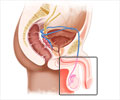
‘Microchip antibiotic testing quickly determines the appropriate antibiotic, aiding in early detection and complete management of infection.’
Read More..Tweet it Now
"Trying to figure what drug to use at what dosage, in the fastest time possible, is key in successfully treating bacterial infections," said Jessie Jeon, an author on the paper. Read More..
Clinicians often treat life-threatening infections with a cocktail of antibiotics, hoping that one of the antibiotics will stop the bacterial infection. However, blanket-prescribing antibiotics contributes to the rise in bacterial resistance.
"Figuring out the effect of different combinations of drugs in a simple manner is likely to have a big impact on health," said Jeon. She explained that her team's speedy microfluidic system was the first for which combinatorial treatments had been tested.
The speed and success of the Korean team's new antibiotic susceptibility testing system is due to two key innovative design features.
The first feature was developing an antibiotic dosage range, crucial for calculating the minimum inhibitory dosage that prevents bacterial growth. By continually pumping antibiotics through the half-millimeter-wide channels in the microchip, the team establishes a dosage range through microchip within 30 minutes. A critical time saver, the dosage range enabled the team to determine the minimum inhibitory dosage within a single test.
Advertisement
Alignment of the five antibiotics tested in this new system with the clinical gold standard measurements suggests that the microchip system is sensitive enough for clinical application, Jeon added.
Advertisement
Source-Eurekalert












